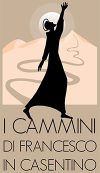Menu
Highlights
- Giotto’s remarkable frescoes
- Tombs of Michelangelo and Galileo
- Brunelleschi’s Pazzi Chapel
- Official starting point of the Via di Francesco
QUICK INFO
Town:
Address:
Piazza di Santa Croce, 16, 50122 Firenze FI, Italy
Days / Time Open:
Operating Hours:
Monday – Saturday
9:30 – 17:30
Sunday & Religious Holidays
14:00 – 17:30
Weekday Mass & Eve of Holidays:
18:00
Holiday Mass:
11:00, 18:00
Confession:
Daily
Rosary:
Monday-Friday
17:30
Donatello’s Crucifix Prayer:
Daily
15:30
Admission Fees:
€8 per person
Note: Online ticket purchases include a €1 booking fee per ticket (except for schools and family tickets). Free tickets must be collected at the ticket office.
Additionally, audio-guide rentals are offered at 4 €, with multiple language options available.



